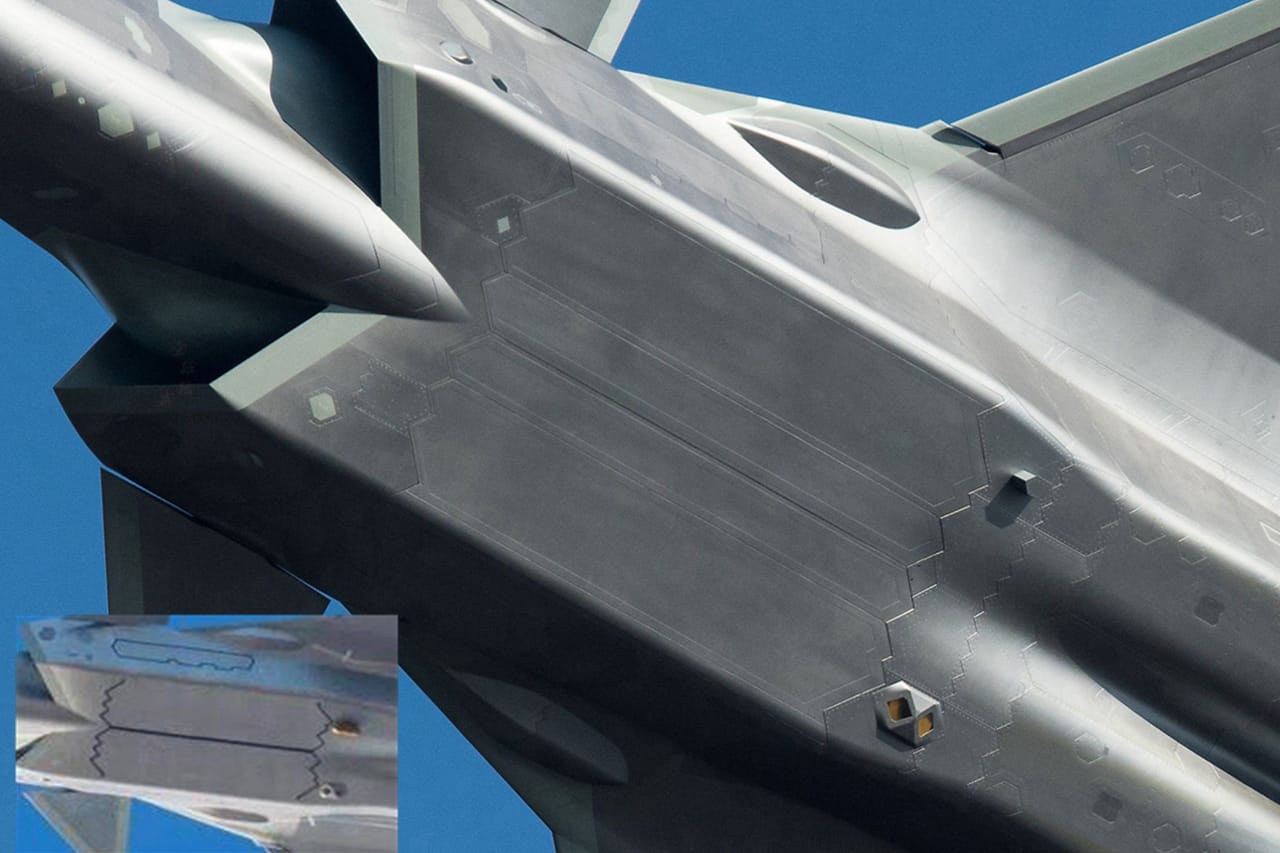A photo released by the People’s Liberation Army Air Force (PLAAF) on Wednesday showed the J-20 ‘Mighty Dragon’ stealth fighter and the J-16 fighter-bomber receiving mid-air refueling from its indigenous YU-20 tanker aircraft.
China can now keep its fighters in the air longer and reach farther American bases in the western Pacific. This is the first time the J-20 is shown undertaking air-to-air refueling, marking another first for the aircraft revealed to the public.
The YU-20 is an air-to-air refueling tanker variant of China’s indigenous Y-20 strategic airlift transport plane, also portrayed as a mark of its domestic aerospace manufacturing capability.
The photo was revealed in a press conference by the PLAAF in Changchun City, northeast China’s Jilin Province, which will host an air show from August 26 to 30. The YU-20 will also make its public debut then, according to PLAAF spokesperson Shen Jinke.
Big Moment for YU-20 & J-20!
China, since the 1990s, has had three types of air-to-air refueling aircraft, none of which provided the massive refueling needs and fuel carrying capacity like the YU-20.

First was the HU-6, a Chinese version of the Xi’an H-6 bomber, itself a locally made version of the Soviet-era Tupolev Tu-16. The second is the Russian Ilyushin Il-76 tanker, and the third being the People’s Liberation Army Navy’s (PLAN) carrier-borne Shenyang J-15, serving as a ‘buddy refueling’ jet.
The J-15 is a version of the Russian Su-33 carrier-borne fighter, which in July 2020 was reported to have conducted a night-time buddy refueling training. While the HU-6 was limited by its lower fuel carrying capacity, reliance on the J-15 buddy refueling is naturally infeasible since it commits an important combat platform for a non-core role.
“It also showed that the YU-20 can host aerial refueling for two aircraft of different types simultaneously, demonstrating that the aerial tanker is flexible, which has high tactical significance,” Wang Minghzi, a Chinese military expert, was quoted by Global Times. Aerial refueling, in general, increases a jet’s combat radius by 30-35%.
Interestingly, this also sheds more light on the J-20’s retractable refueling probe to the right of the cockpit, which is covered under a hatch to reduce radar cross section (RCS). The J-11, J-16, and the J-15 too have retractable refueling probes, with only the J-10 series having a fixed probe.
The J-20 itself has progressed rapidly, with its latest achievement being boasting a twin-seat variant, making it the world’s first Gen. 5 stealth fighter to have such a provision. \
EurAsian Times had reported that the second crew member would aid in controlling wingmen drones, besides aiding the execution of more complex missions. These are simultaneous Suppression of Enemy Air Defence (SEAD)/Electronic Warfare-Air Dominance mission profiles.
The J-20 has been continuously improved, with another significant difference noted in photos from September 2021. It shows what appears to be a retractable Luneburg Lens on its belly just behind the main missile bay doors. Previous versions had a small cylindrical-shaped lens on the same spot, which was widely agreed to be fixed.
The jet was seen making tighter turns and climbing over Zhuhai, according to a report by China Central Television (CCTV) then. A Luneburg Lens, also used by the US’s F-35, is used by stealth aircraft to make themselves visible on radar and hide their true RCS in peacetime missions.

J-20, J-16 & J-10 Combat Teaming
Chinese social media also cited local media and defense publication reports about the PLAAF “building a comprehensive air combat system,” synergizing all of China’s frontline fighters.
These include the J-20, J-16 and the J-10, presumably its latest variant, the J-10C, in a single unit carrying out combat simulations with other support aircraft and ground units.
A Chinese social media user posted that the exercises are without pre-set conditions to make them as closest to actual combat and “rapidly transition to having full combat and operational readiness in all tactical scenarios.”
This has certainly been motivated by the fears of an imminent conflict in the western Pacific following US Speaker Nancy Pelosi’s visit to Taiwan earlier this month, which saw China conducting unprecedented live-fire drills around the island.
The participation of the J-20 in the live fire drills and missiles flying over Taiwan to land in the seas on its eastern side were two of the major firsts in the exercises.
A retired Air Commodore-rank IAF fighter pilot who had flown in exercises with the United States Air Force (USAF) said the J-20 units are likely to have been ordered to learn the ultra-advanced jet rapidly.
“J-20 is different from other Gen. 4++ jets. It is highly sophisticated with advanced electronics, stealth, sensors, sensor fusion, data processing, and possibly some Artificial Intelligence (AI)-enabled systems. Thus, the pilots also have to be proficient in these areas, besides just learning to control and fly the aircraft in a short time fully,” he said.
The Veteran added that the units and pilots must be under tremendous pressure since they now have to perform three tasks simultaneously: undertake routine combat patrols, participate in exercises/drills and keep experimenting and exploring the aircraft.
This is also a parallel techno-industrial effort where there are attempts to push the aircraft to the limits set by the manufacturer, the Chengdu Aircraft Corporation, and share testing information with the developer leading to further innovation in technology.
- The author can be reached at satamp@gmail.com
- Follow EurAsian Times on Google News




